Seems appropriate
Originally shared by Dana Williams
Corsican Vendetta Dagger c1825
This dagger’s colorful name may come from the design’s historical association as an ambush and assassination weapon. It is also known as a Mediterranean dagger because the design can be found in Sardinian, Italy, France (les couteaux Corses), and Spain (almarada or chupa sangre).
The reverse tapered swage makes the tip strong and ideally shaped for stabbing, while the blade is long and sharp for cutting. The overall length of this dagger is 16 15/16″. The blade is 11 3/4″ long, approximately 15/16″ wide near the grip, with the top edge being 3/8″ wide over most of its length. The reverse tapered swage is 4 1/2″ long. The grip seems to be made of one piece from horn or tortoiseshell. The dagger is unmarked, but it likely dates from the late 18th century to the mid 19th century.
Corsican has become known for multi-generational feuds where honor required the spilling of blood. By some estimates more than 4,300 murders occurred there between 1821 and 1852. We have our own famous blood feuds here in the United States, like the Hatfields and McCoys, but is hard to imagine a death toll like that.
In the mid 19th century a short story entitled Colomba by Prosper Mérimée help romanticize the Vendetta tradition. Afterwards many vendetta style daggers were created for the tourist trade. Often these souvenirs have colourful inscriptions like “May your wounds be mortal” or “You go straight to the heart of the enemy”.
111-0225
#Dagger
#VendettaDagger
#EdgedWeapons
#WeaponsCollector
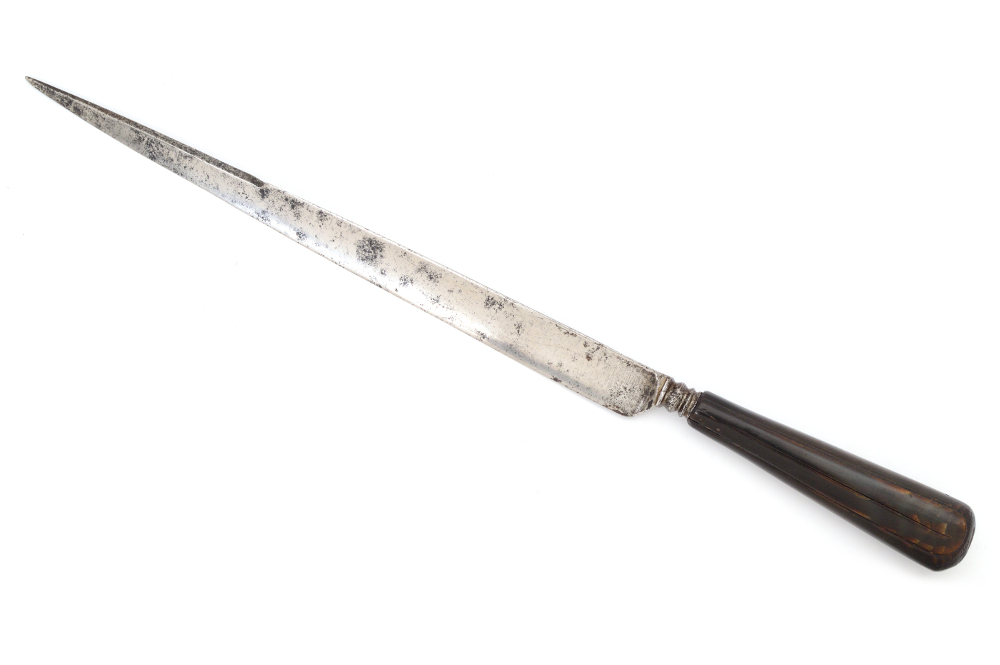
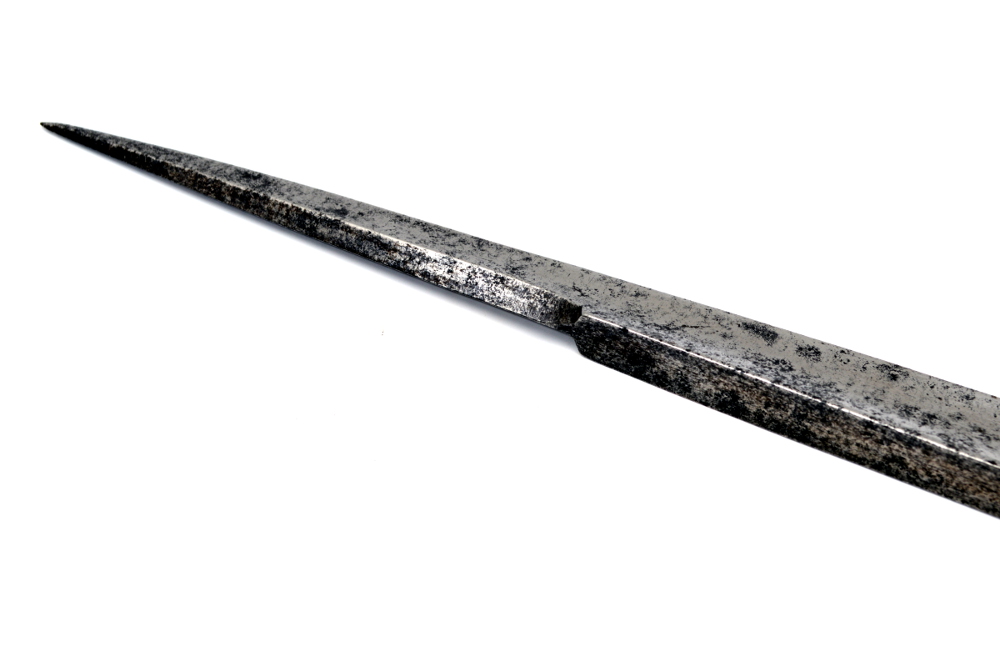
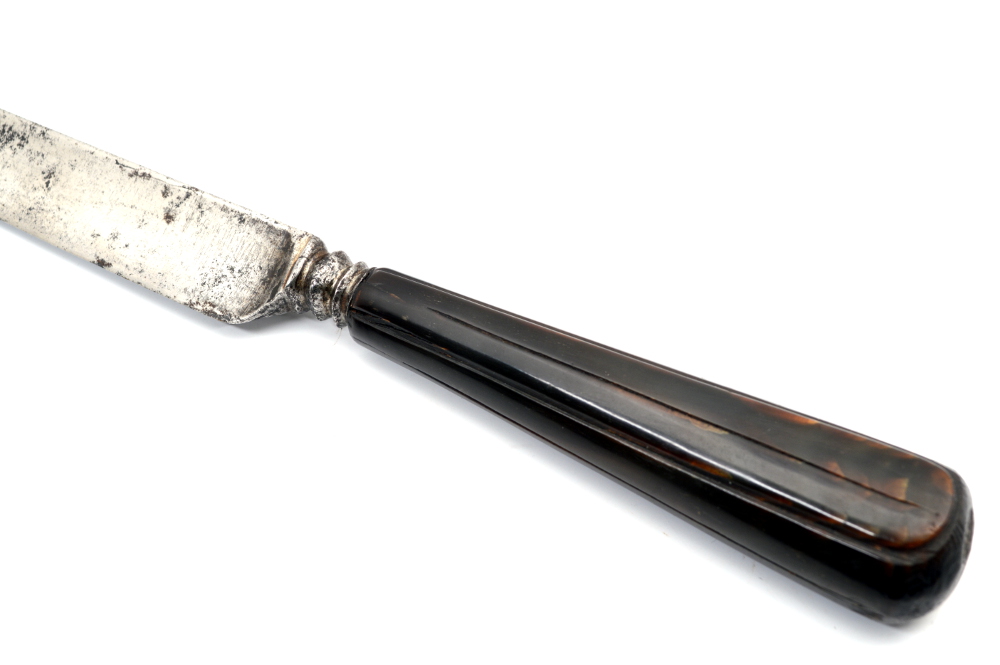

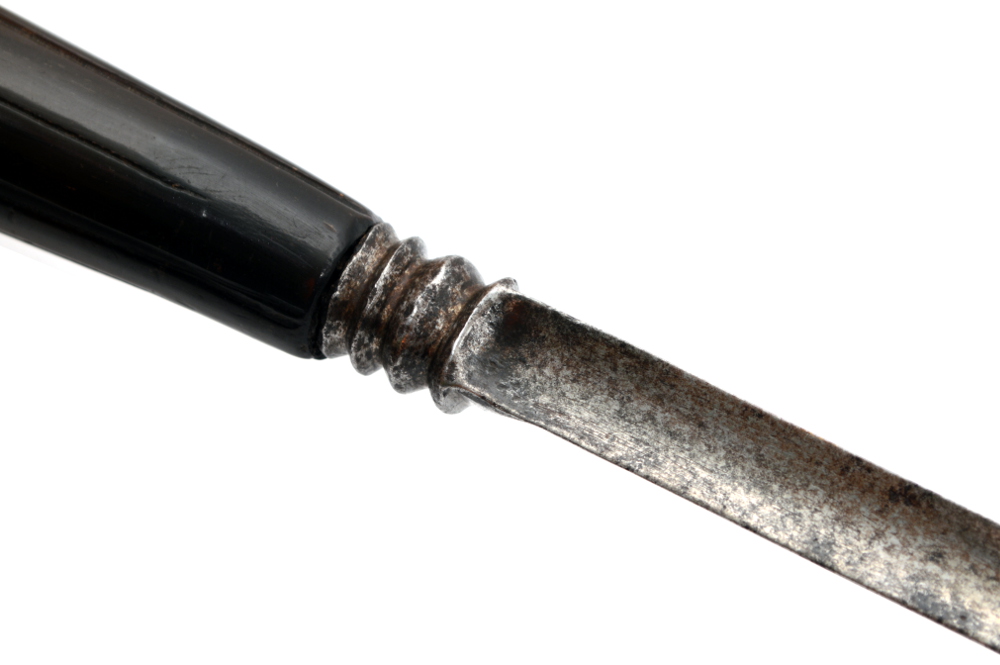
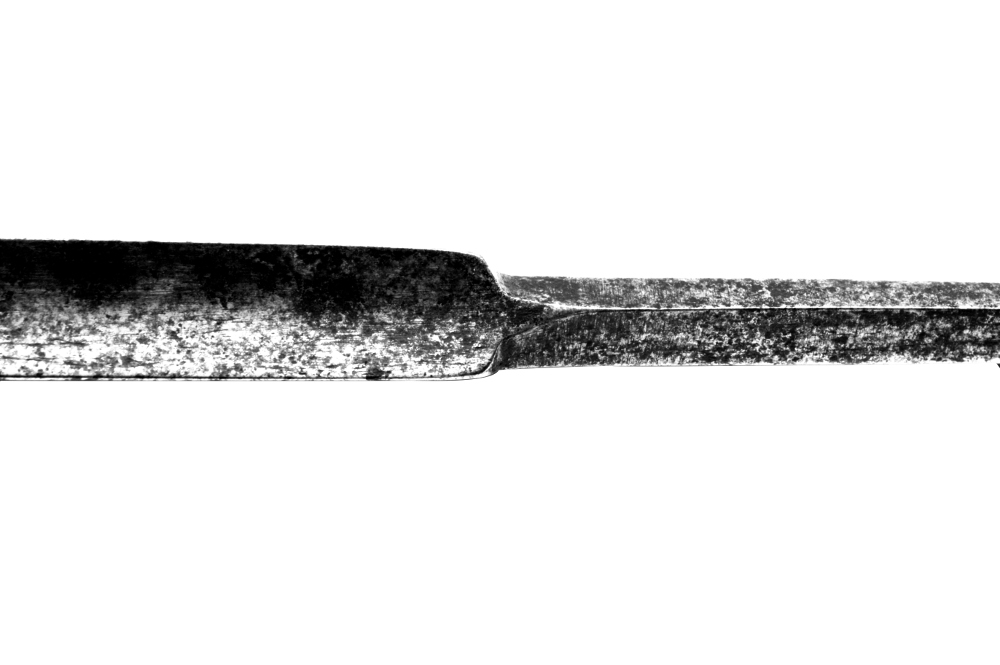


This a a cool idea. I think Doskvol is missing a little Romeo & Juliet right now, with family clans and vendettas nobody (living) still remembering the cause of the feud.
The Haigs vs. the Keels, maybe? 🙂
My only concern with this blade is with lack of a guard and the handle tappered in, it would only be suitable for slashing not stabbing. As stabbing with it would result in a cut hand.
Luke Cartner considering that the description says the tapered blade was built for stabbing and it was used for centuries as such I bet it worked pretty well as a stabbing weapon. Maybe not as much against an armored opponent but a good assassin goes after targets when they are unarmored and unprepared.
Colin Fahrion oh I see your meant to hold it blade down(icepick grip), not up or forward. That makes sense then.
Luke Cartner yeah I didn’t think about it but you are right an ice pick looks like the best grip for it!